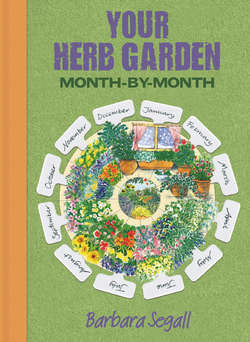Читать книгу Your Herb Garden - Barbara Segall - Страница 56
На сайте Литреса книга снята с продажи.
MARCH
ОглавлениеIf your herb garden preparation was delayed by cold weather and impenetrable soil last month, this one will be busy. If the weather is still against you, concentrate on the many indoor activities that must be started now. Get indoor seed sowing into full swing. Starting seed off indoors results in earlier harvests, as you can plant sturdy seedlings into the soil when it begins to warm up in late spring.
If you have neither the space nor the inclination to grow your herbs from seed, buy young plants from specialist herb nurseries and garden centres. Check that the plants are healthy, with no dead or damaged stems, and are not root-bound in their pots. Now is the ideal time to set out established and pot-grown plants in the herb garden. Always plant into well-prepared soil that has been enriched with well-rotted compost or fertiliser. Water the plants in thoroughly and let them get settled before you begin harvesting leaves.
Early spring is also a good time to begin planning and planting outdoor herb containers. If you don’t have space for a herb garden, this is an ideal way of growing at least the herbs you use frequently. Herbs grown in containers need regular watering (at least once a day during warm, dry spells), and staking if they grow too tall. Attractive containers and decorative herbs make striking features on patios, balconies and in the herb garden itself. By training and pruning certain herbs, such as rosemary and lavender, you can create unusual shapes that make attractive focal points. It takes time and patience, but the results are fun and worth the effort. If you use bought plants, choose them with their future, trained shape in mind. For example, upright-growing rosemary suits a formal shape, while prostrate rosemary trained onto a circular wire shape becomes a living wreath.
